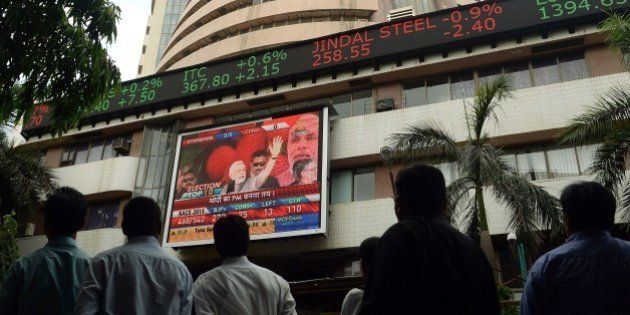
NEW DELHI — India's economic growth is projected to surpass that of China's, with the GDP expected to zoom by 7.7 per cent in 2016, according to a UN report which said India will help accelerate economic growth in South Asia.
The mid-year update of the UN World Economic Situation and Prospects (WESP), released today, said India's economy is projected to grow by 7.6 per cent this year and 7.7 per cent in 2016, overtaking China.
China is projected to grow by 7 per cent in 2015 and 6.8 per cent next year.
The report termed South Asia's economic outlook as "largely favourable" since most economies are expected to experience a strengthening of growth in 2015-16 on the back of stronger domestic consumption and investment, and a pick-up in exports.
The region's GDP is projected to grow by 6.7 per cent in 2015 and 6.9 per cent in 2016, up from an estimated 6.3 per cent in 2014--a significant revision of the previous forecast.
"This revision mostly reflects a higher growth trajectory in India," it said.
It said the growth prospects for Iran and Pakistan have also improved moderately, although for both countries significant uncertainties remain.
Across South Asia, the expansion is expected to be driven by buoyant household consumption and a gradual recovery in investment.
Private sector demand will be underpinned by a more benign macroeconomic environment, including considerably lower inflation.
In 2015, global consumer price inflation is expected to average 2.5 per cent, the lowest level since 2009.
With oil prices expected to recover slowly and global activity projected to pick up, average inflation is forecast to accelerate to 3 per cent in 2016.
Average inflation in the region is also projected to fall to its lowest level in almost a decade, following the recent decline in oil and food prices.
As a result, monetary policy has become more expansionary in several countries, notably in India and Pakistan, it said.
However, despite the improved outlook, South Asia's economies face, to varying degrees, long-standing development challenges including energy shortages, infrastructure deficits and political and social unrest.
The global economy will continue to grow at a modest pace.
The UN report said growth of world gross product is projected to accelerate slightly from 2.6 per cent in 2014 to 2.8 per cent in 2015.
In 2016, global growth is forecast to improve to 3.1 per cent but there are still considerable downside risks to the baseline forecast, related to the upcoming move towards monetary policy normalisation in the US, ongoing uncertainties in the euro area, potential spillovers from geopolitical conflicts and persistent vulnerabilities in emerging economies.
The overall subdued performance of the world economy since the global financial crisis has raised concerns of a "new normal" of lower growth, especially in view of a broad-based weakness in investment.
In the United States, the economic recovery remains on track and the short-term outlook is relatively favourable, it said.
Following strong expansions in the second and third quarter of 2014, growth has, however, slowed noticeably.
The weak performance in early 2015 can be attributed to less investment in the energy sector, disturbances to international cargo shipping and bad weather.
Growth is expected to pick up over the next quarters and reach 2.8 per cent in 2015, before decelerating slightly to 2.7 per cent in 2016.
Japan's GDP is projected to grow by 1.2 per cent in 2015 and 1.0 per cent in 2016.
In 2014, the Japanese economy suffered from the consumption tax rate hike and fell into recession by mid-year.
The report added that Geopolitical tensions and conflicts constitute a significant downside risk to the economic outlook.
In several countries such as Ukraine, Syria, Iraq and Yemen, military conflicts have taken a heavy human toll and led to widespread destruction.
While the negative economic impact has so far been limited to the subregional level, the risks lie in possible spillover effects of any regional conflict to the global level.
Potential transmission channels include trade, commodity prices and financial asset prices.
Geopolitical conflicts, especially in Africa and Western Asia, also remain risk factors for the global oil market, it said.



Contact HuffPost India